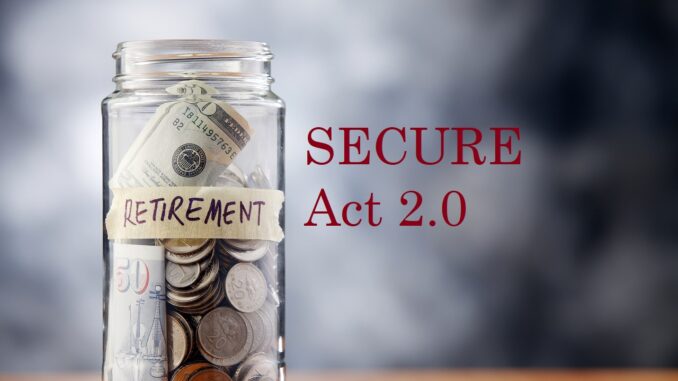
What would enhance every community’s retirement? It is an interesting question, and in some ways, it just leads to other questions. However, if you want to know what the government’s answer to the question is, you could read the 92 sections of SECURE Act 2.0. That is, if you can find it.
SECURE Act 2.0 is not a stand-alone bill. Surprise, surprise. It is tucked away deep inside the Consolidated Appropriations Act of 2023. More specifically it is Division T.
You will find it right after Division R – No TikTok on Government Devices, and Division S – Oceans Related Matters.
It does make you wonder about the priority level of the SECURE Act, but at least it made it higher in the table of contents than Division EE – Post Office Designations, and Division JJ – North Atlantic Right Whales.
Before you go rushing to read the appropriations bill, here are a few more provisions designed to “enhance” every “community’s” retirement.
Auto Enrollment
Beginning in 2025 all 401(k) and 403(b) plans will be required to automatically enroll participants when they become eligible. The deferral must be at least 3 percent of compensation but not more than 10 percent. There is also a requirement to increase the deferral percentage by 1 percent each year until it reaches 10 percent. Current retirement plans are grandfathered and will not have to add automatic enrollment.
It appears that plans created in 2023 and 2024 will not include automatic enrollment at first but will be required to add it in 2025.
Saver’s Match
Currently, taxpayers can receive what is called the Saver’s Credit. The credit is based on Adjusted Gross Income and can be up to 50% of contributions to an IRA or retirement plan with a maximum credit of $1,000.
SECURE Act 2.0 repeals the Saver’s Credit and replaces it with the Saver’s Match. Instead of receiving the credit as part of a tax refund, the amount will be a federal matching contribution to an IRA or retirement plan.
The Saver’s Match does not go into effect until 2027.
Perhaps it is going to take the IRS the next four years to figure out how to mail checks to the various custodians of IRA and retirement plan accounts.
Also, can it be received as a Roth contribution?
Student Loan Matching
Beginning in 2024 employers will have the option to allocate matching dollars toward an employee’s student loan payments. Student loan repayments will not be considered contributions to the plan but will be tested separately for nondiscrimination purposes.
Plan sponsors are awaiting guidance on how to amend their retirement plans, and service providers are updating software for record keeping.
Companies that hire large numbers of college graduates will likely be the first to implement this change to their matching contributions, and surely new employees will be seeking retirement plans that offer student loan repayments.
The opinions and commentary of the author are provided for general and educational purposes only and are not intended to provide legal, tax, or investment advice. Information is as of the date published and may not contain updates or changes to the topics covered. This information is not intended to reflect a current or past recommendation concerning investments, investment strategies, or account types; advice of any kind; or a solicitation of an offer to buy or sell any securities or investment services.
Wyatt Moerdyk is the CCO, and Managing Member of Evidence Advisors, LLC, a registered investment advisory firm.

